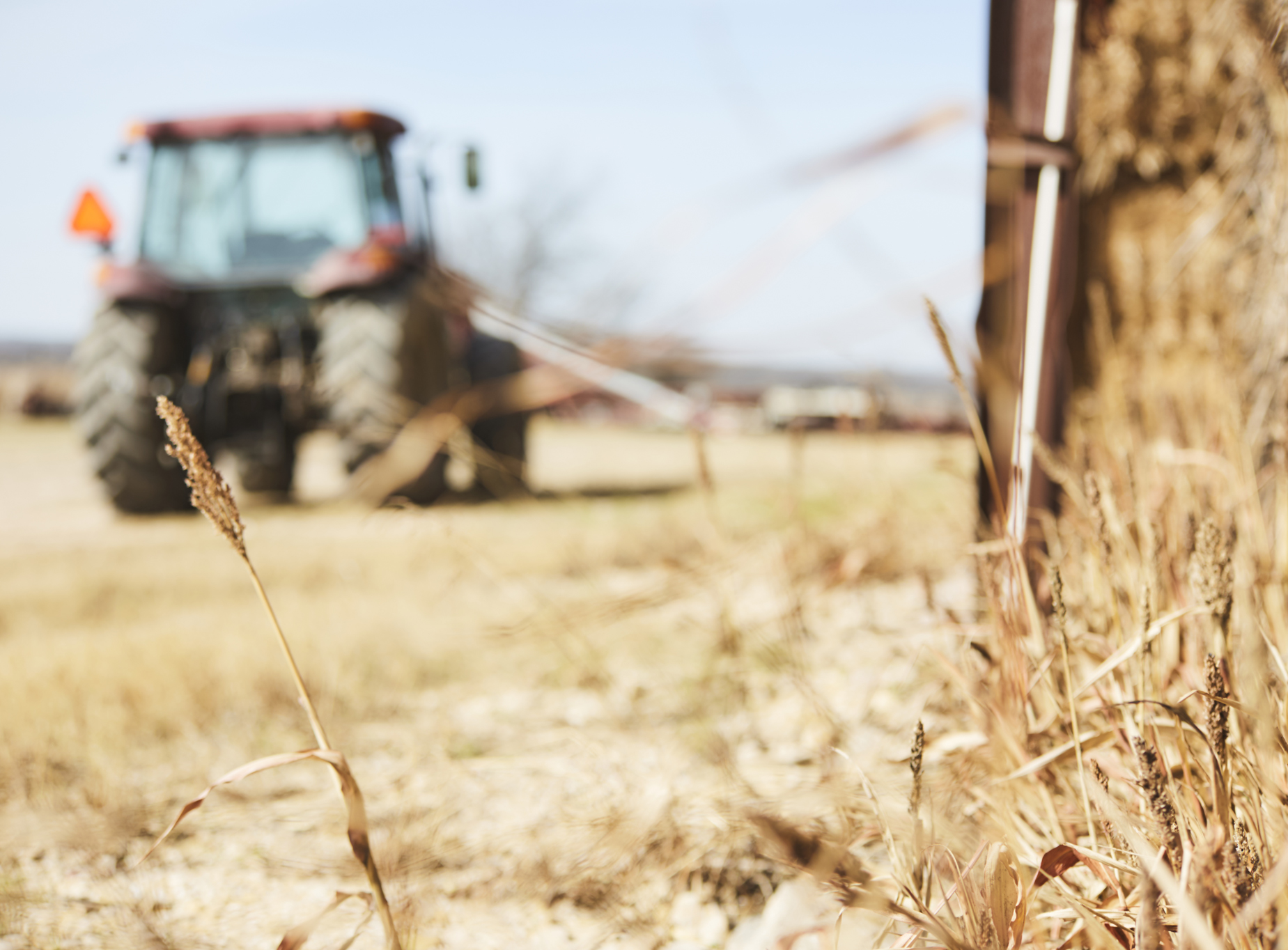
The Roaming Life of a Commercial Beekeeper
Discover how commercial beekeepers “follow the bloom" and help farmers across the nation to pollinate and produce important crops with the help of honeybees.

Think about the amazing choices food consumers have today. South American quinoa, Spanish olives, English cucumbers, French wines, North African couscous, California berries, Asian curries. This abundance was made possible by a combination of climate, soil suitability, logistics, economics, modern agricultural practices, and digital technology.
In celebration of this tremendous diversity and abundance, let’s take a closer look at three regions around the world. They offer a snapshot of the ways that climate pressures, local infrastructure, and technology support agriculture. You’ll notice that some crops can grow in a variety of regions and soils, like corn, wheat, potatoes, and soybeans. Others require specific latitudes, climates, and soils, like rice, olives, coffee, and sugar cane.
North and South America boast some of the world’s most productive crop lands. The United States and Brazil are among the world leaders of corn and soybeans. Supporting this production is a robust system of technological innovation, including advanced breeding and genetic modification of seeds, digital tools like data analytics and precision technology, and agronomic practices like conservation tillage and no-till planting.
United States grain production also benefits from the most advanced storage and transportation infrastructure in the world. The Grain Belt, where the majority of corn, soybeans, and wheat are grown, is situated among four key river systems. The Mississippi, Illinois, Missouri, and Ohio Rivers meander throughout farm country, providing efficient and affordable transportation. Perhaps most important: these four systems converge and flow into the Gulf of Mexico, contributing crucial export value.a
United States grain production also benefits from the most advanced storage and transportation infrastructure in the world. The Grain Belt, where the majority of corn, soybeans, and wheat are grown, is situated among four key river systems. The Mississippi, Illinois, Missouri, and Ohio Rivers meander throughout farm country, providing efficient and affordable transportation. Perhaps most important: these four systems converge and flow into the Gulf of Mexico, contributing crucial export value.a
Major crops domesticated
Maize
Major crops today
Corn, soybeans, cotton, rice, wheat,
canola, fruits, tree nuts, vegetables,
and sugars from cane and beets
Soil typesb
Mollisols, Ultisols, Alfisols
Climate classificationsc
Primarily temperate/mesothermal,
continental/microthermal, some dry
(arid and semi-arid)
Major crops domesticated
Potatoes, tomatoes, cacao
Major crops today
Corn, soybeans, sugarcane,
ground nuts, quinoa, tree nuts, fruits,
cacao, and vegetables
Soil types
Oxisols, Ultisols
Climate conditions
Primarily tropical/megathermal,
some temperate/mesothermal,
small amount of dry (arid and semi-arid)
Despite the arid climate in the northern third of Africa, agriculture remains vital to the region. Cassava offers a wonderful case study in the global proliferation of crops. Native to South America, this tuber grows remarkably well in drought conditions. As a result, it is well-suited for Africa, which produces more than half the world supply in any given year.d In some nations, like Ghana for example, this single crop provides nearly a third of the local population’s caloric intake.e
Despite the arid climate in the northern third of Africa, agriculture remains vital to the region. Cassava offers a wonderful case study in the global proliferation of crops. Native to South America, this tuber grows remarkably well in drought conditions. As a result, it is well-suited for Africa, which produces more than half the world supply in any given year.d In some nations, like Ghana for example, this single crop provides nearly a third of the local population’s caloric intake.e
Major crops domesticated
Coffee, okra, yams, sorghum, pearl millet
Major crops today
Yams, cassava, lentils, corn, rice, palm oil, banana, plantains, fruits, vegetables
Soil types
Oxisols, Entisols, Ultisols
Climate conditions
Northern third is dry (arid and semi-arid); central third is tropical/megathermal, southern third is mix of temperate/mesothermal and dry (arid and semi-arid)
One consequence of the changing world climate is rising sea levels, which is altering the salinity of coastal waterways and soils, especially in Southeast Asia. These soils are excellent at holding water, making them ideal for rice paddies. For the region’s rice farmers, a new generation of advanced seed hybrids1 are being developed to adapt to higher soil salt levels.f In a region well known for rice production, these seed innovations are vitally important.
One consequence of the changing world climate is rising sea levels, which is altering the salinity of coastal waterways and soils, especially in Southeast Asia. These soils are excellent at holding water, making them ideal for rice paddies. For the region’s rice farmers, a new generation of advanced seed hybrids are being developed to adapt to higher soil salt levels.f In a region well known for rice production, these seed innovations are vitally important.
Major crops domesticated
Wheat, apples, barley
Major crops today
Wheat, olives, rice, cotton, fruits, vegetables
Soil types
Mollisols, Inceptisols, Entisols
Climate conditions
Primarily dry (arid and semi-arid)
Major crops domesticated
Rice, apricot, eggplant, soybean, sugar cane
Major crops today
Rice, soybeans, corn, wheat, palm oil, sugarcane, fruits, vegetables
Soil types
Ultisols, Entisols, Inceptisols
Climate conditions
Mix of tropical/megathermal and temperate/mesothermal
The production of crops in the most suitable regions, combined with the ability to transport crops from one region to another, contributes to what economists call comparative advantage. This theory asserts that every region ought to focus on doing or growing what it does best, and should trade with other regions who are doing the same. Everyone benefits from the efficiencies produced.
The production of crops in the most suitable regions, combined with the ability to transport crops from one region to another, contributes to what economists call comparative advantage. This theory asserts that every region ought to focus on doing or growing what it does best, and should trade with other regions who are doing the same. Everyone benefits from the efficiencies produced.
The use of technology will continue to be important to a growing world impacted by a changing climate. Digital tools like software, advanced data analytics, and satellite weather technology help farmers grow their crops as efficiently as possible. These tools help farmers produce stronger crops, reduce their impact on the environment, waste less food, and find markets for their crops, all with tremendous precision and efficiency.


The use of technology will continue to be important to a growing world impacted by a changing climate. Digital tools like software, advanced data analytics, and satellite weather technology help farmers grow their crops as efficiently as possible. These tools help farmers produce stronger crops, reduce their impact on the environment, waste less food, and find markets for their crops, all with tremendous precision and efficiency.
As more farmers around the world gain access to new technologies and new markets, everyone can benefit. Farmers can have more stable and successful operations, consumers can have access to more and more choices, and the planet can benefit from the efficiency and precision that lead to less impact on and use of natural resources.
aUS ag exports are expected to contribute $134 billion in value in 2017.
www.ers.usda.gov/webdocs/publications/81326/aes-97.pdf?v=42704
bUSDA Soil Taxonomy:
www.nrcs.usda.gov/wps/portal/nrcs/main/soils/survey/class/taxonomy/
cKöppen Climate Classifications:
http://www.physicalgeography.net/fundamentals/7v.html
dPage 41: www.fao.org/3/a-i6198e.pdf
ehttp://www.fao.org/3/a-i3278e.pdf
fwww.sciencedirect.com/science/article/pii/S1672630817300185
Related Articles

Discover how commercial beekeepers “follow the bloom" and help farmers across the nation to pollinate and produce important crops with the help of honeybees.

